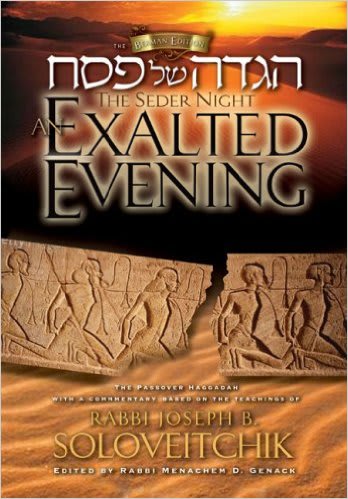Moses is described as the “safra rabah, the great scribe of Israel” (Sotah 13b). Moses was surely a scribe in the technical sense; as Rambam noted in his Introduction to the Mishneh Torah, Moses wrote a Torah scroll for each of the twelve tribes and one to be placed in the Holy Ark. The reference here, however, is not to Moses’ technical skill or superior handwriting. The reference is to the art of writing God’s living word upon a sensitive, passionate heart, the art of projecting God’s fiery and flaming letters upon the blank patches and uncharted lanes of human memory, the art of impressing God’s image upon the receptive and questing human personality. Moses was called “Safra rabah de-Yisrael” because he was a scribe in the same sense in which Ha-Kadosh Barukh Hu is referred to in the Sefer Yetzirah, “Be-sheloshah devarim ha-olam nivra: be-sefer, be-sofer, be-sipur, the world was created by a Scribe who wrote a book with a story.”
According to the Kuzari (4:25), when the Torah repeatedly mentions “And God said,” it refers to the act of sipur, the result of which was the sefer of all of creation. It was the word of God that created the world and which is embedded in nature and continues to drive it. If the flowers bloom, the birds fly, man walks, and the heavenly bodies remain in motion, it is because this is the will of God. Moses earned the title of the great scribe in Israel because the Torah he taught was inscribed on the parchment of the hearts and souls of the people so that they might act as the scribes that would teach the next generation. Just as the original word of God continues to drive nature, so, too, the Torah that Moses taught in the desert is as alive for us today as it was thousands of years ago.
Megillat Esther refers to itself first as an iggeret, a letter (Es. 9:26, 29), and later as a sefer, a book (Es. 9:30, 32). There are significant differences between these two forms of writing. A letter is written for a temporary purpose. In contrast, a sefer refers to a text that is meant to endure, to survive and communicate to future generations. For example, the prophet Jeremiah commands that the contracts for sale of land be written in a sefer and placed in earthen vessels so that they will last a long time (Jer. 32:10–14). A sefer documents an event for present and future generations. Similarly, God commanded Moses to document the eternal conflict between God and Amalek in a sefer and transmit it to Joshua (Ex. 17:14).
The obligation of Sippur Yetziat Mitzrayim is the obligation to view one’s child as a sefer to be written with care and not as an iggeret. A Jew must feel that he has participated in the entire collective Jewish experience, and he must inscribe this knowledge into the book that is his child—it is the child who is the sefer upon whom the parent writes the history of God’s encounter with the Jewish people.
The night of Pesach is a symbol for this intergenerational transmission process. We are all familiar with the story of the great rabbis who were assembled in Bnei Brak and were involved in sippur Yetziat Mitzrayim all that night until dawn. The “night” symbolizes the long, dark exile that we have endured for two thousand years; the long night of pogroms and blood libels and crusades and inquisitions and Holocaust that we have suffered. Not only were Rabbi Eliezer, Rabbi Akiva, Rabbi Tarfon, and Rabbi Joshua at that table, but the great Gedolei Yisrael throughout the ages were present as well.
Yet despite all the difficulties, Gedolei Yisrael recognized that they had a mission to serve as the scribes of their generation, not in terms of writing books, but as scribes that engrave a love of Torah in the heart of each Jew. Gedolei Yisrael carried the burden, and transmitted their Torah as an intergenerational Sefer and not as a fleeting iggeret. They seized on the method God uses, the sipur be-sefer, writing on the book of creation, to ensure the continuity of faith in God and the eternity of the Jewish people. The Torah remains alive to us today because of them. If not for their efforts, we would not be able to sit at our Seder table and discuss the Exodus on the night of Pesach. Jews are called the Am ha-Sefer, the people of the book, not because they are avid readers, but because each and every Jew is a living book that has been authored by the preceding generations.
Excerpted from An Exalted Evening: The Seder Night by Rabbi Joseph B. Soloveitchik. More information on the book can be found here: www.oupress.org
The words of this author reflect his/her own opinions and do not necessarily represent the official position of the Orthodox Union.

